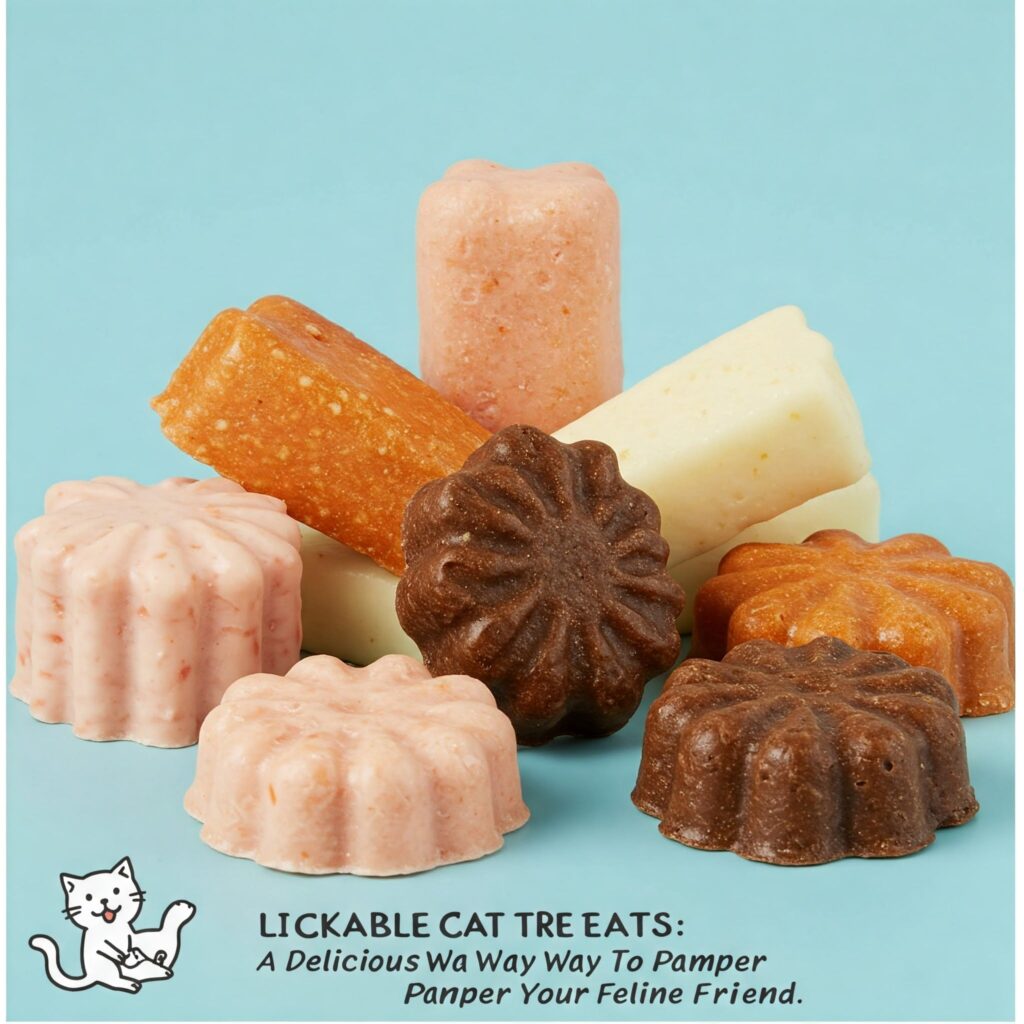Introduction
In 2025, pet owners are increasingly seeking innovative ways to enhance their cats’ nutrition and well-being. Lickable cat treats have emerged as a popular choice, offering a combination of taste, hydration, and health benefits. These creamy treats are not only a delightful indulgence for felines but also serve functional purposes, such as aiding in hydration and delivering essential nutrients. This article delves into the latest trends, expert insights, common challenges, and practical tips surrounding lickable cat treats.
Current Trends in Lickable Cat Treats (2025)
The pet food industry has witnessed a significant shift towards functional and convenient products. Lickable cat treats have gained traction due to their versatility and health benefits. Key trends include:
- Functional Ingredients: Brands are incorporating ingredients targeting specific health concerns, such as urinary tract health, skin and allergy support, and hairball control.
- Texture and Flavor Variety: Manufacturers are offering a range of textures and flavors to cater to diverse feline preferences, enhancing palatability and acceptance.
- Hydration Support: Given that cats often have low water intake, lickable treats with high moisture content are being promoted to support hydration.
Expert Insights and Practical Applications
Veterinary professionals emphasize the benefits of lickable treats in various scenarios:
- Medication Administration: The palatable nature of these treats can aid in disguising medications, making administration easier for both cats and owners.
- Appetite Stimulation: For cats with decreased appetite, such as seniors or those recovering from illness, lickable treats can serve as an appetite stimulant.
- Bonding and Enrichment: Feeding lickable treats directly can enhance the human-animal bond and provide mental stimulation.
Common Challenges and Solutions
While lickable cat treats offer numerous benefits, certain challenges may arise:
- Overfeeding: Excessive treat consumption can lead to obesity. It’s recommended that treats constitute no more than 10% of a cat’s daily caloric intake.
- Ingredient Sensitivities: Some cats may have allergies or sensitivities to specific ingredients. Owners should carefully read labels and consult with veterinarians if concerns arise.
- Selective Eating: Cats may prefer treats over their regular diet, leading to nutritional imbalances. It’s essential to ensure that treats complement, rather than replace, a balanced diet.
Actionable Tips for Pet Owners
To maximize the benefits of lickable cat treats:
- Moderation is Key: Limit treat intake to maintain a balanced diet.
- Choose Quality Products: Opt for treats with high-quality, natural ingredients and minimal additives.
- Monitor Health Indicators: Observe your cat for any adverse reactions or changes in behavior after introducing new treats.
- Consult Professionals: Seek veterinary advice when incorporating treats into diets, especially for cats with health issues.
Conclusion
Lickable cat treats have become a staple in feline care, offering both indulgence and health benefits. By staying informed about current trends and best practices, pet owners can make choices that enhance their cats’ quality of life. As the market continues to evolve, prioritizing nutrition, hydration, and overall well-being remains paramount.
Frequently Asked Questions (FAQ)
Q1: Are lickable cat treats suitable for all cats?
Most cats can enjoy lickable treats, but it’s essential to consider individual health conditions and dietary needs.
Q2: How often can I give my cat lickable treats?
Treats should not exceed 10% of your cat’s daily caloric intake. Moderation ensures a balanced diet.
Q3: Can lickable treats replace regular meals?
No, they are intended as supplements or rewards and should not replace complete and balanced meals.
Q4: What should I look for in a quality lickable cat treat?
High-quality protein sources, minimal additives, and functional ingredients targeting specific health benefits are indicators of a good product.

